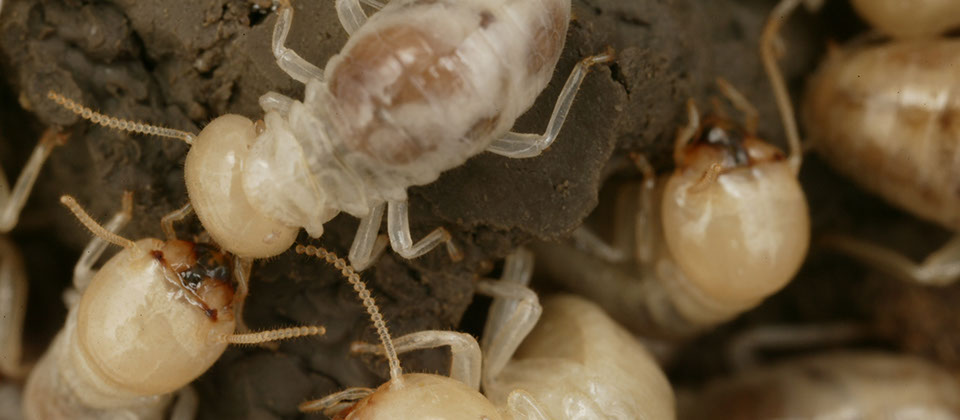DEPARTMENT OF
ENTOMOLOGY

Current Research Interests
The Formosan subterranean termite is an invasive wood-destroying pest species, which causes billions of dollars in economical damage in the southeastern U.S., especially in Louisiana. My program utilizes molecular methods (gene expression studies, microsatellite genotyping, 16S sequencing, and genetic engineering) to provide knowledge about the biology of the Formosan subterranean termite and the ecology of its symbiotic gut flora. Based on this knowledge I generate new information on termite biology and develop novel approaches to termite control, e.g., using genetically engineered gut symbionts to deliver and express foreign genes in termite colonies.
In particular my research program combines two main aspects:
(1) Population genetics and gene expression in the Formosan subterranean termite:
Identification of colonies of subterranean termites is necessary to assess treatment success, identify residual activity after treatment and sources of re-infestation and to assess the survival of termites after catastrophes, such as the flooding of New Orleans after Katrina. In addition, sources of introduction and ways of spread can be traced by assessing the relatedness between colonies. This research provides information for the legislature, the pest control industry and homeowners on issues, such as prevention of termite spread, success of area-wide treatment, and re-infestation potential.
Investigation of the plasticity of the termite colonies’ breeding system contributes to advances in the theories of development and maintenance of eusociality in termites, elucidates invasion success of this exotic termite and sheds light on the impact of the breeding system on treatment success and vice versa.
Increased knowledge about swarming behavior, inbreeding avoidance and mate selection strategies of this invasive termite species may spark new ideas on how to disrupt the spread of this urban pest.
Gene expression studies and gene silencing in different developmental stages of the Formosan subterranean termite and in the termite gut will lead to discovery of important genes and pathways and may lead to novel avenues of termite control.
(2) Microbial diversity and ecology of the termite gut and genetic engineering of gut bacteria for termite control:
The survival of the Formosan subterranean termite is dependent on its gut flora in many ways. The knowledge obtained from my workgroup’s studies improves understanding of the microbial ecology of the termite gut and is expected to aid in the development of tools and targets for termite control.
By investigating the ecology of such an exotic ecosystem as the termite gut an amazing diversity of bacteria was discovered. The majority were novel species, which belonged to specific lineages only found in termites. Bacteria were isolated and identified that play important roles in the termites’ nutrition, such as bacteria able to produce vitamin B 12 and to fix nitrogen. Although the bacterial community of the Formosan subterranean termite differs from colony to colony, between different geographic regions, and with regards to the diet of the termites, several bacteria species were present in most of the investigated termite colonies, and are thus in all likelihood an obligate symbiont. Some of these bacteria species have been cultured, and are ideal candidates for paratransgenesis to achieve termite control. We are genetically engineering these termite specific gut bacteria to deliver and express detrimental genes in termite colonies. Genetically engineered termite specific bacteria can in the future serve as self perpetuating, self replicating biological agents for termite control. A fast and cost effective product that is easily introduced and transferred in a termite colony and specifically eliminates termite colonies using a minimum of pesticide application will reduce the cost for termite control and damage repair for homeowners, taxpayers and the State of Louisiana.
